Founded in 2004 by George Petersen and presented since 2015 by the NAMM MUSEUM of Making Music, the TECnology Hall of Fame honors and recognizes audio products and innovations that have made a significant contribution to the advancement of audio technology. Inductees to the TECnology Hall of Fame are selected by a panel of more than 50 recognized audio experts, including authors, educators, engineers and other professionals. Products or innovations must be at least 10 years old to be considered for induction.
Past Inductees: 2015 | 2016 | 2017 | 2018 | 2019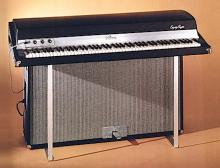
Perhaps one of the most recognizable sounds in jazz, pop and rock recordings, the Rhodes electronic piano was the invention of Harold Rhodes, who created the concept of rugged portable piano-like instruments that struck aluminum rods (rather than strings). His first attempt at making a piano alternative was during World War II, when he created a portable instrument used as therapy for recovering wounded soldiers. After the war, he began a business building 30-note stringed "pre-pianos," but gave this up in favor of designs using struck tines, along the lines of a series of tuning forks. Rhodes met with Leo Fender, leading to the development of the Piano Bass, a 32-note instrument that allowed keyboardists to play bass lines, either placed atop pianos or organs or stand mounted. In 1965, the Fender Rhodes was born and 73- and 88-key versions with (or without) the attached amplifier and speaker soon became the norm among both musicians seeking a portable instrument as well as in studio sessions — a favorite of artists such as Herbie Hancock, Chick Corea and endless others. Companies specializing in third-party action and electronic improvements sprung up — such as "Dyno My Piano" — which took the Rhodes design to new heights. With the introduction of sampling instruments in the 1980's and 1990's, the Rhodes piano lost popularity and Harold Rhodes passed away in 2000. And today, a new Rhodes Music Corporation has been building recreations of Rhodes' electromechanical piano designs for a new generation to appreciate.
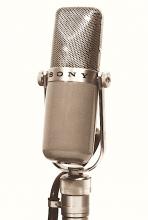
In the early 1950s, Japan didn’t manufacture condenser mics and European models such as Neumann U47's were very expensive. Seeking an alternative, Japanese broadcaster NHK created a few prototypes based on a silver-coated celluloid diaphragm, which would burn if the DC bias voltage was too high. After hearing about the NHK experiments, Sony engineer Kanane Nakatsuru wanted to build a condenser mic, but using a 6-micron diaphragm from DuPont's (then new) Mylar sputtered with gold vapor. Rather than the expensive Telefunken AC-701 miniature tube, Nakatsuru designed a single-stage amplifier using an affordable 6AU6 pentode tube configured as a triode. Sony co-founder Masaru Ibuka suggested putting the Sony name in large letters across the mic’s center band, so when the mic appeared on television, the Sony brand would be visible in close-ups on singers or newscasters. This two-pattern (omni and cardioid) C-37A debuted in 1955 (1958 in the USA) and even today, is highly prized among engineers and studios.
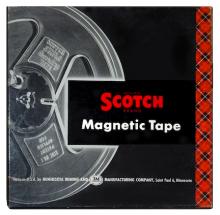
3M was founded in 1902 as Minnesota Mining and Manufacturing Company, originally quarrying stone for grinding wheels and later turning to making sandpaper. Interestingly, the product that laid the groundwork for 3M's entry into the audio market was the development of pressure-sensitive adhesive tape under its "Scotch" brand in 1930, which provided the company with expertise in coated thin-film technologies. After World War II, the race was on to create tape recorders based on the German Magnetofon, and with no magnetic tape manufacturing capability worldwide, Brush Development sought the expertise of 3M to create a tape for its BK-401 Soundmirror, the first American-made recorder. Created by a team headed by 3M's William Wetzel, the result was Scotch Type 100, a paper tape coated with black oxide. It worked fine on the consumer-quality Soundmirror machines, but was unsuited for the Magnetofon and Ampex' new 200A pro decks. Development continued and paper-base tapes were replaced with modern polyester- and acetate-base tapes with lower coercivity formulations (such as 3M's Type 112) that were ideal for the new generation pro decks. After becoming the first U.S. manufacturer of magnetic tape, 3M went on as a leading player for decades to come, especially with its Type 250 (1974), Type 226 (1979) and Type 996 (1990), which all contributed to the advancement of professional analog recording technology.
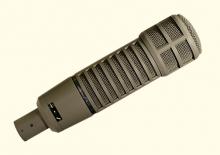
It isn't often that a microphone — or any piece of electronic gear — remains in production for decades, but nearly a half-century later, the Electro-Voice RE20 remains as popular as ever. The RE20 is a rugged, dynamic mic design, yet emerged as a favorite among announce broadcasters, studio musicians and sound reinforcement pros worldwide. And its wide range, flat response, effective pop filtering, tight cardioid polar pattern and high-SPL handling made it ideal for capturing bass, horns and kick drum. This 8.5-inch/26-ounce mic (substantially large for a dynamic design) also employed an internal humbucking coil and a Variable-D design that reduced proximity effect of close-up vocals.
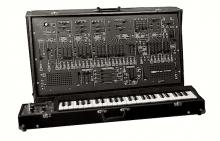
The inspiration for invention can come from many sources, and according to industry lore, ARP Instruments was founded in 1969 by Alan Pearlman who decided to build synthesizers after hearing Wendy Carlos' classic Switched-on Bach album a year earlier. And the ARP 2600 subtractive synthesizer was not the company's first product — that was the ARP 2500 — with the 2600 following shortly after. The 2600 was a semi-modular design — most of its basic synthesis blocks were configured as pre-wired assemblies. This allowed it to be used with or without patch cords, making them ideal for use in schools and thousands of students — even today — got their first taste of music synthesis on ARP instruments. The company closed in 1981, but the ARP sound lives on in a legacy of recordings both new and old, as well as in software emulations, such as the Arturia ARP 2600 V.
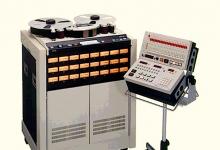
Otari Electric Company was founded in Tokyo in 1965. In many ways, the Otari MTR-90 represented the pinnacle of Japanese electromechanical technology, leading to it becoming the best-selling analog 24-track of all time. Incorporated an advanced transport, with gentle tape handling combining a pinch roller-less, direct drive capstan and with phase-locked-loop DC servo circuitry, it was the right product for its time and was a popular choice in studios everywhere. An Otari employee once described the Otari difference by liking its microprocessor-controlled transport to that of a Seiko quartz watch, while competitors like Studer obtained accuracy via complicated mechanical system, much like a Rolex watch, as an apt analogy to the Japanese vs. Swiss approach. Interestingly, Otari remains the last remaining producer of professional tape recorders, and its MX-5050 2-track is still available on special order.

Historically, digital outboard devices have had a very short shelf life. Yet even in these days of plug-in signal processing, it's interesting that TC Electronic's 2290 Dynamic Digital Delay was both in production for 20+ years (1985 to 2005) but even a decade later, still finds its way into studios, performers' racks and live sound riders. The 2290 offered a pristine sound, but offered an abundance of front panel controls for fast, on-the-fly tweaking. And it went well beyond simple delay functions, offering up to 32 seconds of real-time sampling, easy looping, chorus, ducking, gating, panning and five programmable effect loops for control of external effects/pedals. Unfortunately, after a 20-year manufacturing run, it was finally retired — mostly due to the unavailability of the original components that made it so special.
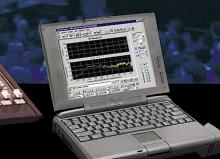
A world-standard today, SMAART (Sound Measurement Acoustical Analysis Realtime Tool) acoustic test software for real-time sound system measurement had simple beginnings. The program was developed and coded by Sam Berkow of SIA Acoustics, a company offering acoustical consulting and design services for recording studios, performance venues and facilities of all types. The genesis began when Pavarotti's FOH engineer Alexander "Thorny" Yuill-Thornton was looking for a method of acoustic echo delay cancellation to deal with monitor issues he encountered. He worked with Berkow — who wrote a routine that added some other functions as well and Thorny and Grateful Dead live mixer Don Pearson were among the first beta testers. With some tweaks and improvements, SMAART caught on, but — not wanting to be in the software business — Berkow licensed the program to JBL and it was later sold to Eastern Acoustic Works and eventually acquired by Jamie and Karen Anderson, two former EAW employees who offer SMAART through their company Rational Acoustics.

Empirical Labs began in 1988 as a recording studio and electronics consulting company, founded by Dave Derr, a design engineer who was employed by Eventide as part of the team on the H3000, H3500 and DSP4000 Ultra-Harmonizer products. Stemming from Derr's love of compressors such as the 1176, LA-2A and Gain Brain, Empirical Lab's first product — the Distressor — came out in 1996. Its classic “knee” compression combined with user-programmable warm distortion was just right for adding life into sterile digital tracks and the Distressor became the secret weapon in the arsenal of top producers, studio engineers and live mixers. In fact, Distressor has sold more than 22,000 units over the years and continues its success nearly 20 years later, proving that great analog gear can thrive in a digital world.
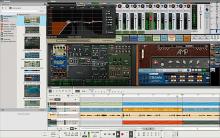
Who would have thought that one of the world leading developers for music product software would have been borne out of a small Swedish company? Founded in 1994, Propellerhead Software quickly made a name for itself with its ReCycle and ReBirth products that were ideal for the growing electronic dance music (EDM) market. A major advance came in 2000 with Reason, which offered a virtual toy box of remix gear, with synths, samplers, drum machines, sequencers, loop players, mixers and effects — all in an integrated environment. Over the years, Reason grew from a niche product to an essential (and now far more powerful) tool for music making, and now incorporates a full-featured DAW with unlimited tracks, an SSL-modeled console and all the toys that have made it a favorite over the past 15 years.
